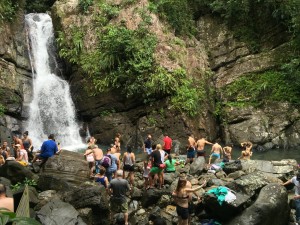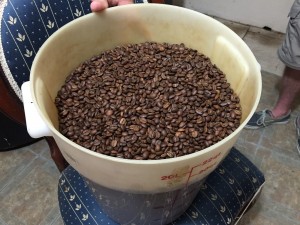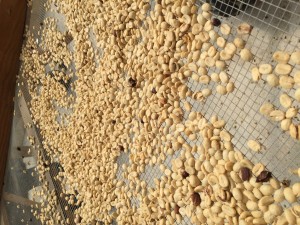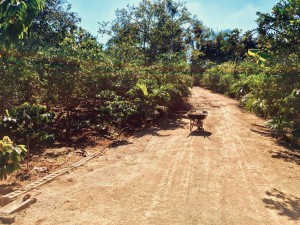Michael Romano
Throughout the last week or so here in Puerto Rico, a lot of things have surprised me. One of the first things that surprised me was the distinctive cultural difference between the island and the continental United States. The initial surprise to me was the amount of spanish spoken. I know that Puerto Rico has two official languages, English and Spanish, but I anticipated there would be a lot of people speaking English considering Puerto Rico is a United States Territory. Surprisingly, the wide majority of people on the island primarily speak Spanish. I found it most interesting when I went to a fast food restaurant, and many of the employees couldn’t speak English despite it being an official language of the island. However, I’ve come to realize the reason for this is the strength of the Pu
erto Rican culture. I’m very intrigued by the amount of pride that Puerto Ricans take in their culture, despite still being considered a territory of the United States. But after doing further research into the history of the island, I learned that Puerto Rico was a Spanish territory until the Spanish American War, and therefore I believe that is the reason Spanish influences and the Spanish language is primarily present. Another thing that surprised me about Puerto Rico is their relations with the United States. Puerto Rico has to pay United States federal taxes, despite not being to vote for the President or have a vote in congress. I was also surprised that people born in Puerto Rico are considered United States citizens.
Another aspect of Puerto Rico that surprised me was the geography of the island. Despite the island only being roughly 3500 square miles, there are many geographical differences between areas of the island. Prior to coming to the island, I envisioned a tropical climate with nice beaches and beautiful rainforests. For example, the first area of the island we stayed on was a town called Fajardo. Fajardo met these expectations in the fullest, being located on the northeast side of the island, in between El Yunque National Forest and the coast. This area was predominantly mountains and rainforests. However, after a few days on the Eastern side of Puerto Rico, we traveled the the far Western side of the island to the University of Puerto Rico in Mayaguez. During this drive, we passed through the southern part of the island around the town of Ponce. This area had a much more arid climate, and was much more dry and hot. I did not expect Puerto Rico to have such a significant area of the island with this climate.
In addition, the food surprised me in PuertoRico. I did not necessarily know what to expect before coming to Puerto Rico in regards to food. However I was pleasantly surprised with the food on the island. The cuisine of the island seems to be a combination of other cuisines from other areas such as Spain, Mexico, and the native culture. There is a variety of fruits, seafood, and other meats. Some of my favorite local foods that I had not had before coming to the island that surprised me were tostones, chicken mofongo, empanadas, and rice and beans. But by far, the chicken mofongo was my favorite of them all. The sweetness of the fried plantains along with the chicken and red pepper may have been some of the tastiest food I have ever had.
Puerto Rico has been full of surprisesand I have enjoyed our time on the island so far and I’m looking forward to our final days on the island. Here is some media I have taken during the trip.

Figure 1: Waterfall in El Yunque National forest that we were able to climb.

Figure 2: Coffee produced at the Cafe Gran Battey that smelled and tasted delicious.






